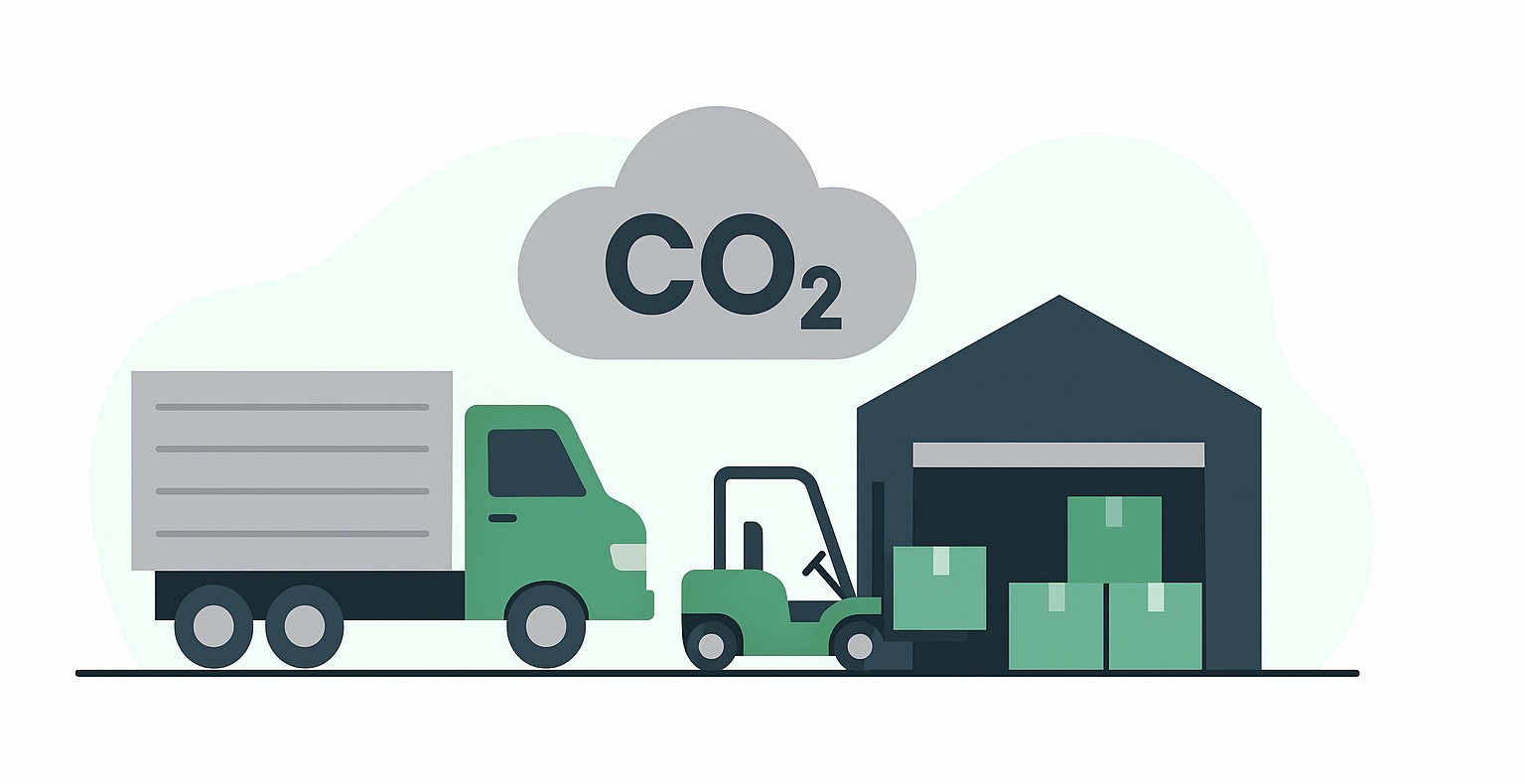Decoding Logistics Emissions: Freight, Warehousing & Everything In-Between
2025-06-24
GHG Inventory
Knowledge

Logistics is one of the most underestimated sources of greenhouse gas (GHG) emissions. While many companies focus on emissions from factories or offices, their freight and warehousing operations can contribute just as much—if not more. Understanding these “in-between” emissions is key to achieving a truly accurate carbon footprint.
Freight Isn’t Just Fuel
Whether by truck, ship, or plane, freight emissions go beyond just the fuel burned. Emissions can vary depending on vehicle type, load factor, route efficiency, and even packaging. A short but inefficient delivery can emit more than a longer, optimized route. That’s why companies need more than distance-based estimates—they need activity-based logistics data.
Warehouses Have a Footprint Too
Warehousing often flies under the radar in carbon accounting, but lighting, heating, cooling, and machinery all contribute to emissions. Large facilities running 24/7 can rival small factories in energy use. Monitoring energy consumption and switching to renewable sources or energy-efficient equipment can make a significant difference.
Connecting the Dots with Smart Tools
Manually tracking emissions across logistics is almost impossible at scale. New digital platforms help connect ERP and logistics systems to gather real-time freight and warehousing data. This not only improves accuracy but also helps optimize routes, choose low-carbon carriers, and improve overall supply chain sustainability.